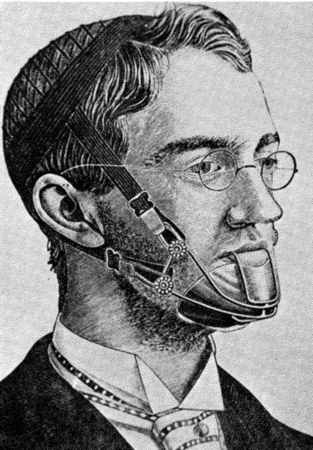Orthodontic History (Part 2)

As we discussed in the last blog regarding the history of orthodontics, rudimentary tooth movement and alignment was being performed as far back as in ancient Egyptian times, with marked improvement and direction occurring in the 18th century. However, orthodontics, as an entity to itself, did not really exist until the mid-1800s.
The next major technological advancement to orthodontics came in 1819, when Christophe-Francois Delabarre developed his appliance, the wire crib. Most believe this to be the beginning of contemporary orthodontics, as we know it. It was a looped appliance placed on pairs of teeth in hopes to keep them in proper alignment. In 1843, Edward Maynard furthered the technology of tooth movement by introducing the use of gum elastics to aid in the improvement of jaw alignment, a practice that E.J. Tucker improved upon by changing to small bands cut from rubber tubing that fit more comfortably for the patient in 1850 (much like the elastics we use today). It was near the end of the 19th century when Henry A. Baker really put a lot of these pieces together into a unified orthodontic treatment method known as “Baker Anchorage” which combined elements of the wire crib and rubber elastics. This gave the pioneering orthodontists the ability to begin to straighten teeth without the extraction of numerous teeth, as was the predominate practice of the time. A final notable addition at the end of the 1800s was the incorporation of radiographs into orthodontics by Eugene Solomon Talbot. Solomon was the first to incorporate X-rays into orthodontics, using them to locate the teeth still under the gums and bone to aid in his treatment.
The real innovators of modern orthodontics did not arise, however, until the early 20th century. Of particular note, and heavily covered in my history of orthodontics course in residency, is the revered “Father of Modern Orthodontics,” Edward Angle. Angle was the first to truly define orthodontics as a specialty unto itself in the field of dentistry. He founded the first school and college of orthodontics, teaching and mentoring orthodontic students from around the world. In 1901, he established the American Society of Orthodontia, which is the precursor of our modern day American Association of Orthodontists, and founded the first orthodontic journal in 1907. Angle developed multiple orthodontic appliances and techniques, many of which are still used today in some form. His classification for malocclusion, known as the Angle Classification, is still used today not only in orthodontics, but in all the branches of dentistry.
Angle truly was an innovator, but technological improvements in the latter half of the 1900s really streamlined modern orthodontics into what it is today. It is these changes that will be discussed in the final installment of this blog thread next time.




